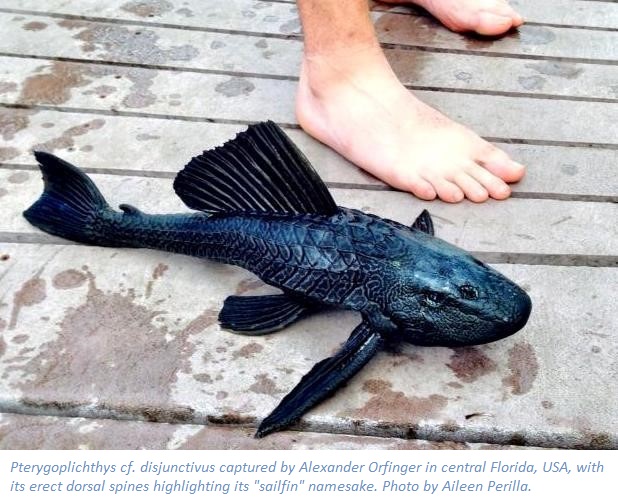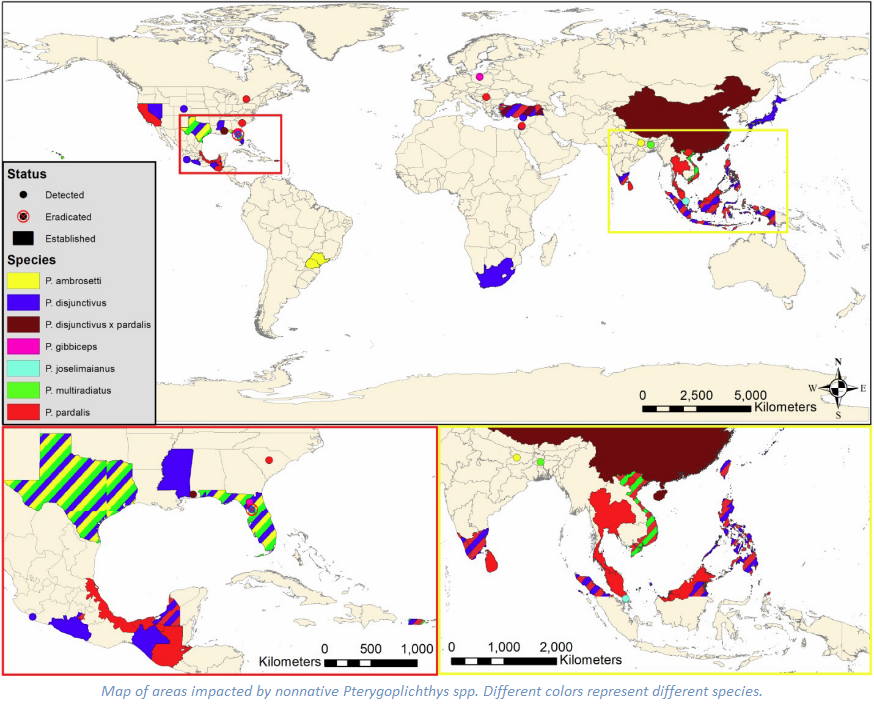New survey assesses global impact of
invasive catfish
The Common Pleco, or “janitor
fish” (Pterygoplichthys pardalis),
is a popular species of catfish known for cleaning aquariums by eating
their algae. It is also a member of one most successful invasive genera
found in freshwaters. A recent survey in Zoological Studies
by Orfinger and Goodding concludes that four species and one hybrid in
the genus have successfully established themselves globally and, while
they cause overall moderate damage to the environment and
socioeconomics, they may be causing significant damage in some
localities.
Just because a species is invasive does not necessarily mean it has a
large negative impact. However, we do not know what kind of impact
these catfish have because they have a complex taxonomic history and no
comprehensive database to track all documented invasions and sightings.

Orfinger
and Goodding made an impact assessment by searching through all the
literature on the genus and using it to make a map of impacted areas.
From there, they quantified local and global impacts using Generic
Impact Scoring System (GISS), which addresses impacts on a sliding
scale using multiple categories covering environmental to socioeconomic
impacts (e.g., impacts on
fishermen and - women).
One category is the impact due to hybridization, or different species
or varieties mating to yield “hybrid” offspring. Hybrid forms can be
less fit than both of their parents, more fit than one and less than
the other, or more fit than both. “This last case of so-called ’hybrid
vigor’ could potentially help invasive species flourish in their new
ranges, but nobody really knows” said Alexander Orfinger of the
University of Central Florida.
The study found that at least one Pterygoplichthys
hybrid form successfully invaded nonnative waters, and there is debate
as to whether the two most dominant invaders - P. disjunctivus and P. pardalis - are in fact hybrid
forms themselves. “There has not been a lot of work done in this area,
and Pterygoplichthys might
present a good study system to tackle such questions."
How are these catfish so successful? "At the end of the day, the root
of many exotic species originates in the pet trade,” said Mr. Orfinger.
“Prospective pet owners need to do their due diligence in learning
about their pets’ long-term needs. Otherwise, you end up with
situations like Pterygoplichthys
in which we have a physically large and resilient group of fishes
invading fresh waters all over the world."
Read the full article, published by Zoological
Studies, here
Follow Zoological Studies on
Twitter @ZooStudies and Facebook

Guo A, Hao Y, Wang J, Zhao Q, Wang D. 2014. Concentrations of
osmotically related constituents in plasma and urine of finless
porpoise (Neophocaena asiaeorientalis):
implications for osmoregulatory strategies for marine mammals living in
freshwater. Zool Stud 53:10.
doi:10.1186/1810-522X-53-10.
Media contact: Noah Last: lastn@gate.sinica.edu.tw

